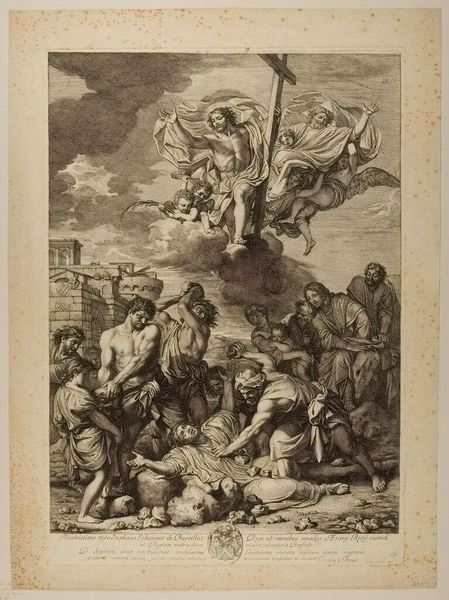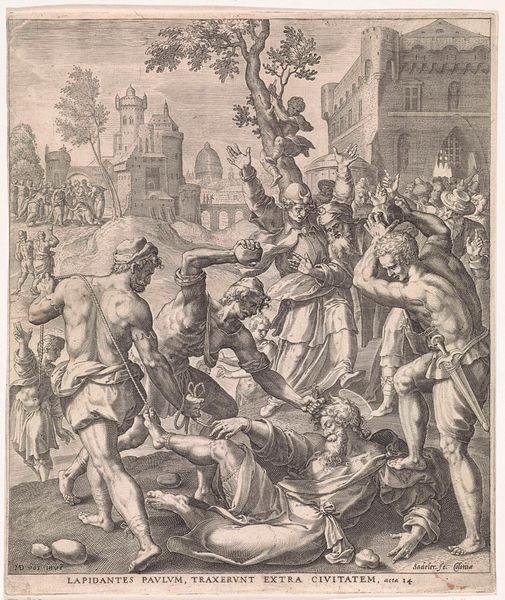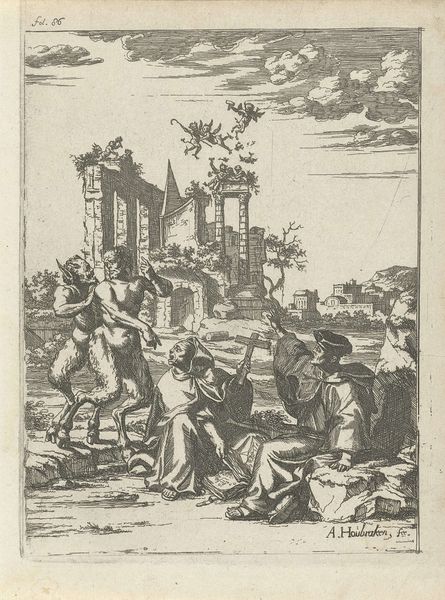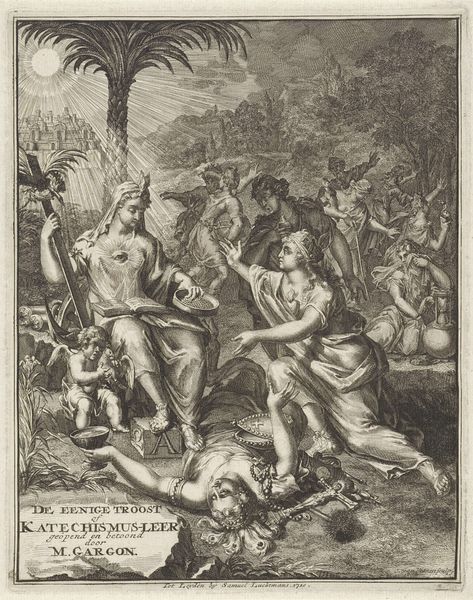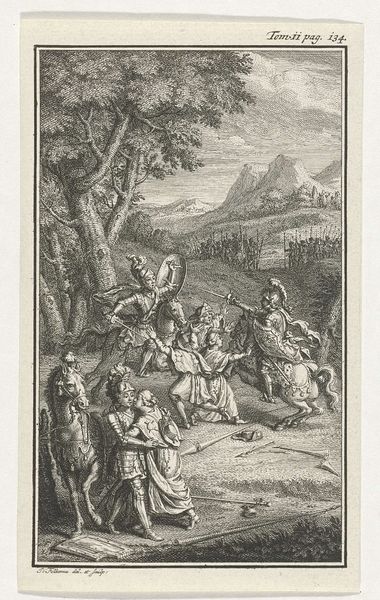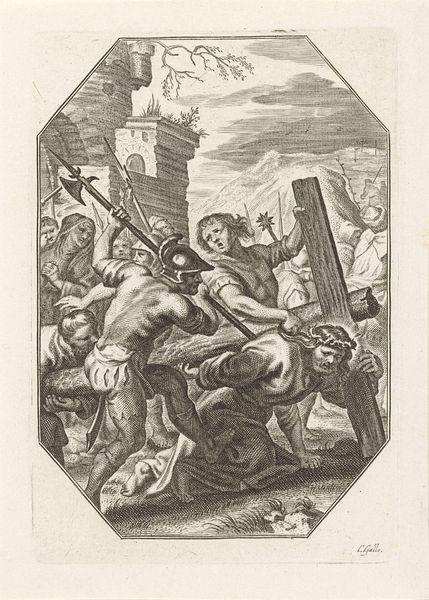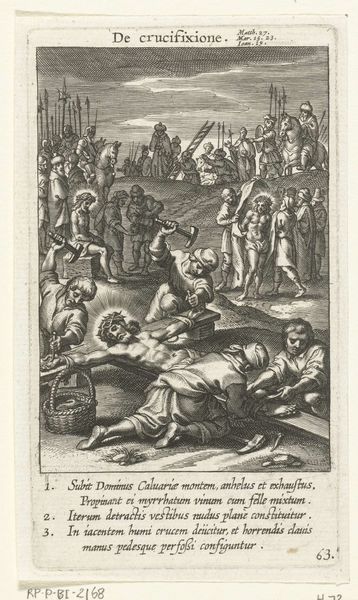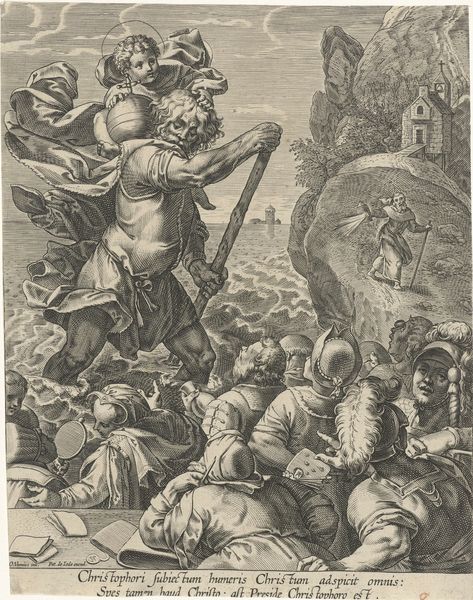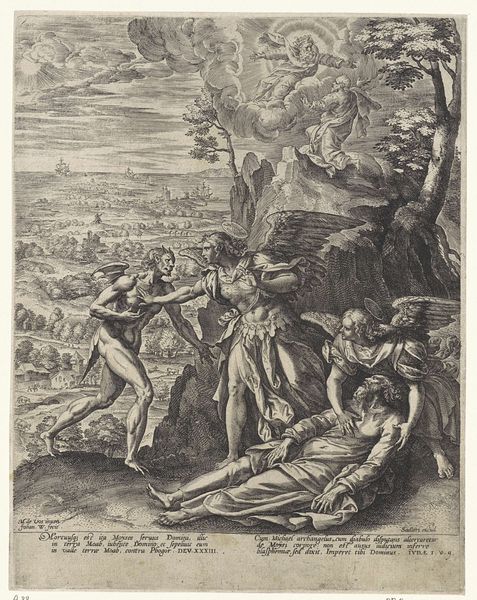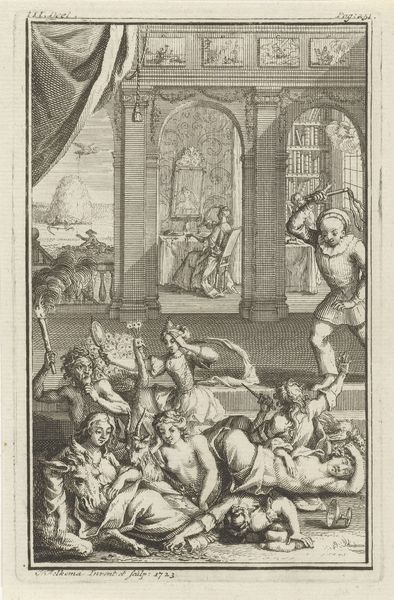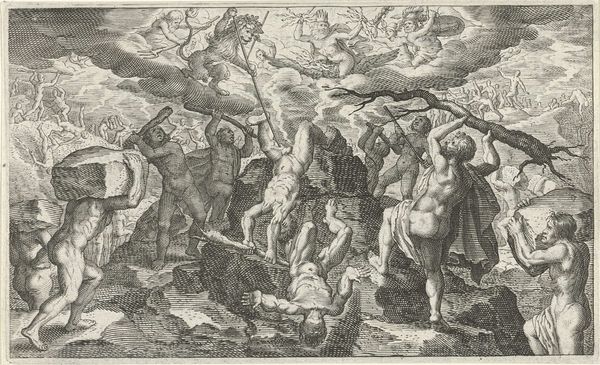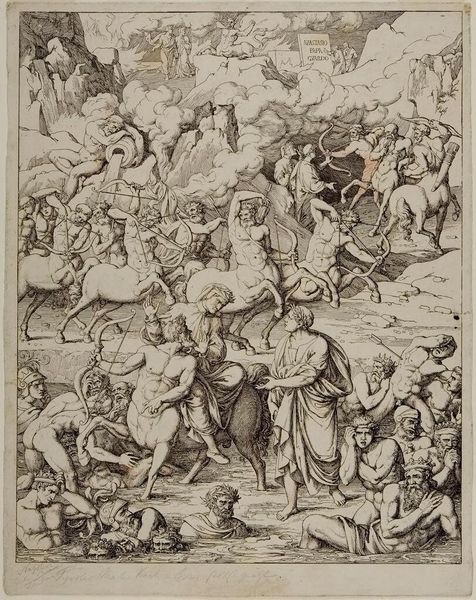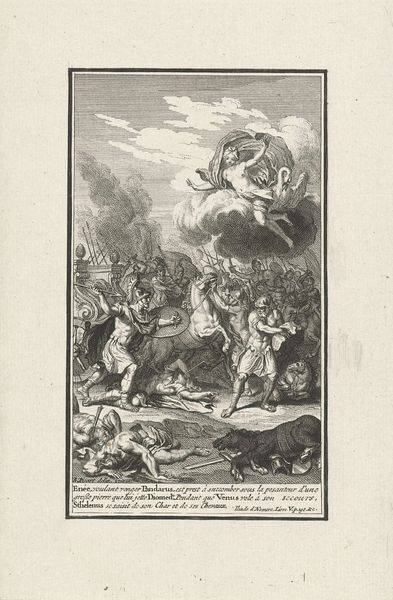
Allegorie op de inval van de Fransen en de bevrijding door Willem III 1655 - 1708
0:00
0:00
drawing, print, ink, engraving
#
portrait
#
drawing
#
allegory
#
baroque
#
pen drawing
# print
#
figuration
#
ink
#
line
#
pen work
#
history-painting
#
engraving
Dimensions: height 87 mm, width 69 mm
Copyright: Rijks Museum: Open Domain
Editor: This is "Allegorie op de inval van de Fransen en de bevrijding door Willem III," created between 1655 and 1708 by Romeyn de Hooghe. It’s a print, an engraving I believe, at the Rijksmuseum. It's quite chaotic and dramatic. So much is going on! What historical narratives are at play here? Curator: This print encapsulates the anxieties and aspirations surrounding the Dutch Republic during a tumultuous period. How do you see William III's figure being presented, considering the piece’s political intent? Editor: He's positioned right at the top, with a sword, next to what appears to be an altar. He’s certainly a commanding figure, but there's a lot of violence depicted beneath him. Curator: Precisely. This visual hierarchy reinforces his role as a liberator ordained by a higher power, suggested by the rising sun behind him. The violence serves as a reminder of the perceived threat. It also prompts questions about the legitimacy of power and the narratives that shape our understanding of historical events. Look at the figures beneath William - can you decipher the social commentary? Editor: It appears there is one group of people, seemingly being pushed down or defeated, while another group rises up with instruments and weapons, as though they have been saved. Curator: Exactly, these groups represent political allegiances and socio-economic tensions within the Dutch Republic. This wasn’t simply about liberating a nation but consolidating a specific power structure. The print functioned as propaganda, shaping public opinion and reinforcing a particular historical interpretation. Do you see any parallels between the function of art then and today? Editor: I think so! Art always exists within a context, trying to shape ideas or reflect the values of a particular society. It gives me a lot to consider in how history shapes not just the art, but also its impact on people and institutions. Curator: Indeed. By examining such prints, we gain insight into the power dynamics of the time, the public role of art, and the constructed nature of historical narratives. It all allows a much broader context than simply aesthetics.
Comments
No comments
Be the first to comment and join the conversation on the ultimate creative platform.
